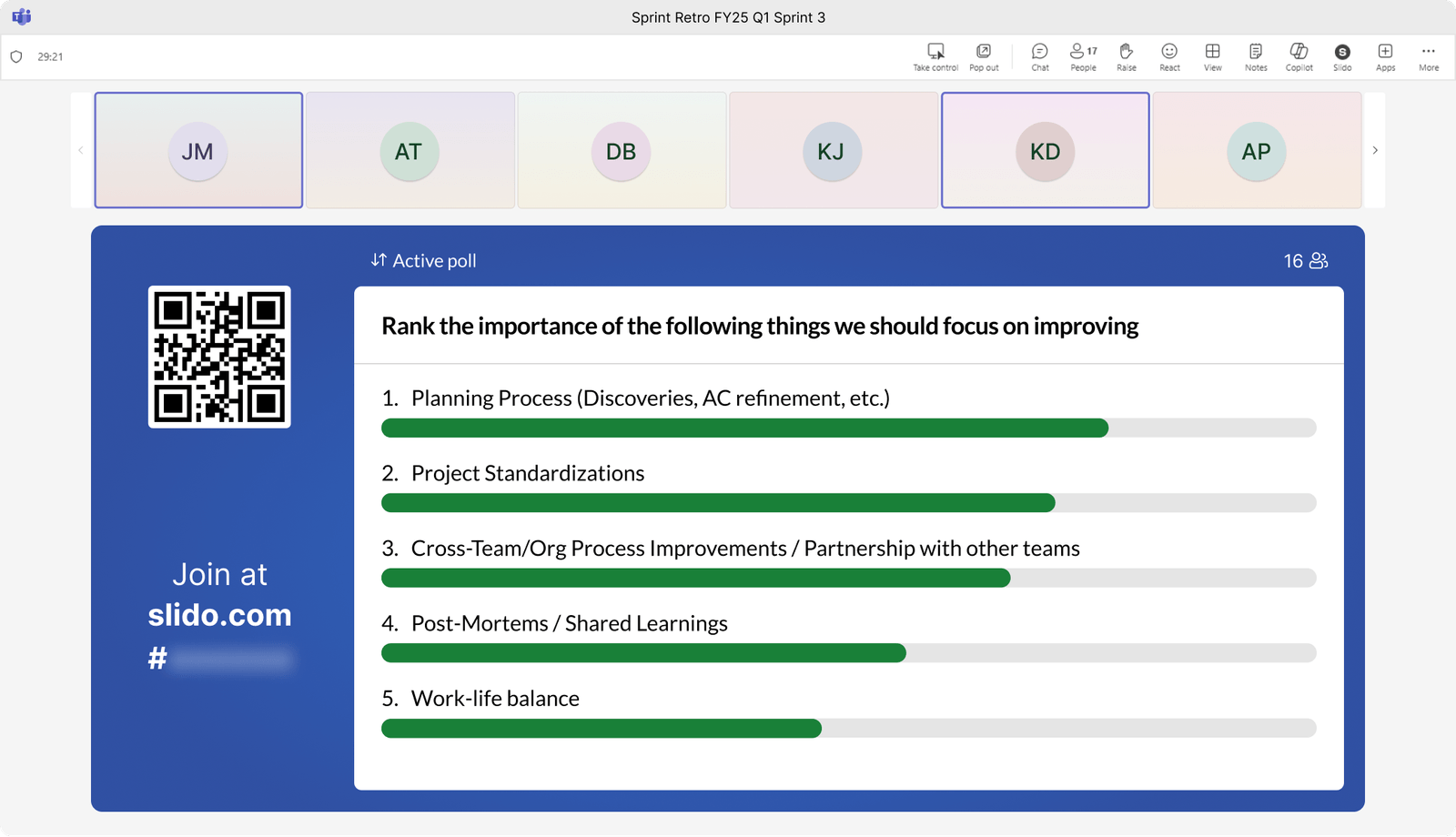You may be a leader, but you’re also a human.

You may be a leader, but you’re also a human.

Autodesk is a world-leading software company that enables designers, engineers, builders, and creators to design and make anything. The company creates a wide range of software products used across many different industries including architecture, engineering, and construction; product design and manufacturing; and media and entertainment.
Autodesk’s more than 14,000 employees are spread across the world, championing a hybrid-first approach. In addition to the company’s headquarters in San Francisco, Autodesk has offices throughout the Americas, EMEA, and APAC.
In this story, Principal Project Manager Chantal Jaeger takes us through how leaders and employees at Autodesk at large use Slido to fill gaps and create connections in a complex, hybrid-first global environment.
Autodesk has been running hybrid meetings since before the pandemic. In these meetings, the team noticed a key gap between the in-person and remote experience. We struggled with having an equitable playing field of how to collect questions in a hybrid event,
Chantal begins. People in-room could easily raise their hands and a mic would be brought over to them, whereas questions from the remote audience would often get lost in the shuffle.
Slido came on board as the bridge between in-person and online audiences. It provided a uniform platform for interaction and participation, regardless of where people sat. Slido helps people ask questions freely and get important messages from our leadership team across the board,
Chantal explains. It gives our employees a platform to be courageous and ask questions.
Being courageous and asking questions is key to Autodesk culture. Slido enables Autodeskers to live their values and “interact so there’s not just someone talking at you all the time” in every meeting.
To avoid dull, alienating monologues, Chantal and her team encourage leaders to use Slido polls to provide an opportunity for meeting attendees to react:

Just launching the poll isn’t enough, though. Reacting to poll results in real time can do everything from drawing connections between presenters and participants to reinforcing transparency and defusing friction.
At one All Hands event, leaders ran a simple icebreaker asking attendees what their summer plans were. As submissions from Autodeskers around the world came up on screen, leaders started to comment on the submissions. The presenters make themselves vulnerable, sharing their plans as well,
Chantal notes. You may be a leader, but you’re also a human.
This example highlights another way Autodesk keeps its company values alive with Slido, allowing everyone to be courageous regardless of their position. But it wouldn’t be possible without cultivating trust.
Trust is a huge pillar of our company,
says Chantal. Seeing leaders respond to Slido poll submissions in real time helps build rapport between leadership and employees. People may think they know their leader but then they find out something unexpected or quirky that they didn’t know before. You’re seeing the commonalities within your organization. It enriches and adds to our transparent, open, and trusting company.
Autodeskers are empowered to work from anywhere and use devices and platforms of their choice. With such a diverse ecosystem of tools in play, it can be challenging to ensure they all work well with one another.
That’s why Chantal and her team have been thrilled by the wide variety of Slido integrations, which help support parity across their toolstack. As Chantal shares:
Whether Autodeskers choose to use Microsoft Teams or Zoom or PowerPoint for Mac or Windows, they can use Slido to boost transparency and enrich their meeting experience.
An organization like Autodesk naturally needs to ask heavier-hitting questions to stay productive and aligned. Chantal and her team have built extensive resources and regularly deliver trainings on using Slido thoughtfully and intentionally to not only boost the human element, but also make sure that decisions are made in an effective and transparent way.
For Chantal, this once again means that presenters and participants should be courageous.
In many organizations, decisions are made without asking anyone about anything. At Autodesk, it’s common for team leads to poll their team on whether something is working. We’re an open and transparent company and people are not shy about sharing what works and what does not,
she explains.
However, polling your team on a certain topic is one thing. Responding to critical reactions in a constructive way is another. Chantal and her team encourage presenters to respond to those detractors. For instance, if 97% of participants vote yes in something, but 3% vote no, presenters address the 3%. This promotes transparency, builds trust, and brings people into the meeting, whether they’re physically there or not. That’s top of mind for us.
We keep the attention of users by engaging them with polls and quizzes.
We’ve learned so much more about our users and their opinions by gathering feedback with Slido.
Slido acts as a conversation starter at our events.